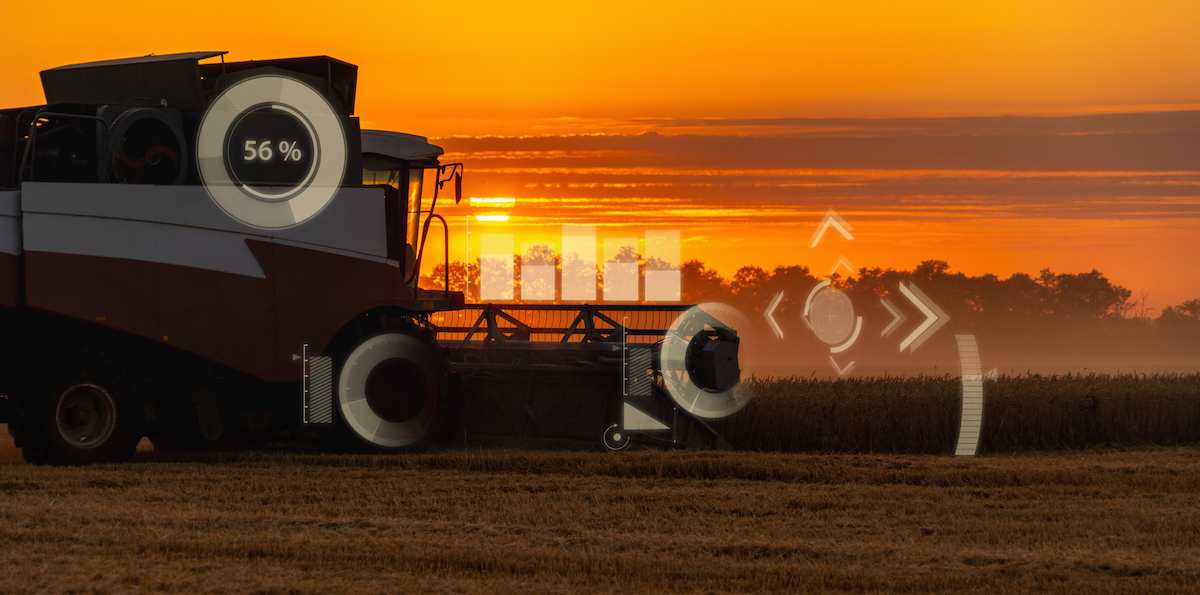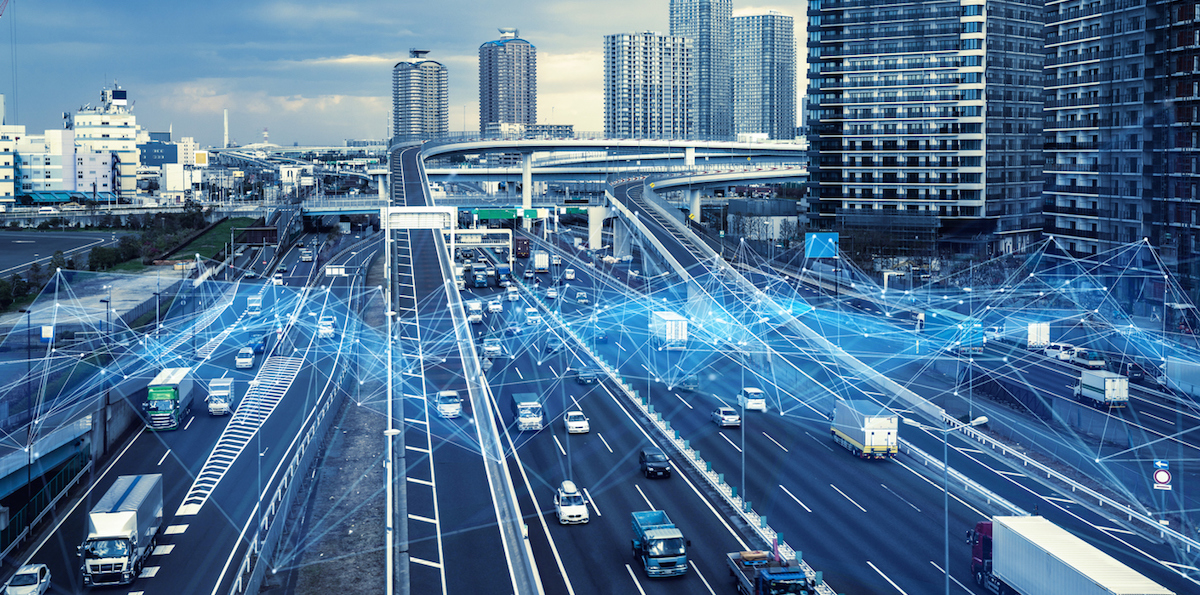The global marketplace is in the early stages of one of the biggest technological transformations in history, with artificial intelligence (AI), machine learning, and automation becoming intertwined with virtually every aspect of life. But these advances require massive data capture, management, analysis and transmission capabilities — and the fifth generation of wireless technology (5G) now rolling out will be critical to making it possible to manage and process the data when and where it’s needed.
The emergence of 5G technology promises to facilitate a fundamental shift in how the world uses networks and works with data. Tomorrow’s 5G networks will be capable of a 10GB-per-second peak data rate, and will improve end-to-end latency by upwards of 5 milliseconds, according to Seagate’s Data at the Edge report. Thanks to its speed and greater bandwidth at the edge, 5G will unleash the power of the Internet of Things (IoT), enabling connections by more than a million devices per square mile.
The increased power of 5G networks will open up a whole new set of IoT capabilities at the edge for just about every industry, from banking and finance to agriculture and manufacturing.
But this explosion of data at the edge over 5G networks will come with challenges.
More data at faster speeds creates opportunities, and challenges
“Because of the vast increase in transmission speed and bandwidth, the number of data-capturing or data-creating devices we deploy per square mile can vastly increase,” says Rags Srinivasan, senior director of growth verticals at Seagate. “Now anything and everything can be internet-connected and sending data. We could have literally thousands of sensors on just one particular machine performing a function at the edge. In addition, todays sensors provide really detailed data — just like your smartphone camera lens can capture more data in each generation.”
This proliferation of data from 5G-connected devices will ultimately require the use of data processing solutions closer to the data source. This is the dawn of the IT 4.0 era — the new IT infrastructure paradigm that transforms data from passive to active. Edge computing will enable processing of data at or near where it is collected, rather than on a cloud server, so analysis and answers can be provided much more quickly to make decisions and solve issues immediately.
“It’s a great thing that 5G enables us to capture and send more data to a place where AI algorithms can quickly find the value in them. But it also presents a problem,” says Srinivasan. “Previously, without 5G, I couldn’t transmit the data from more than a few sensors. Now, 5G will enable this massive data load. But the trick is this: before we can derive value from the data, we must have an IT infrastructure capable of managing that data — enabling it to be efficiently used and manipulated — all the way from the endpoint to where it’s ultimately processed in depth.”
In other words, the purpose rapid 5G data transmission of and edge data analysis is to derive value from the data. But the sheer magnitude of the data that will be available could easily overwhelm the IT infrastructure’s ability to process and analyze that data, if that infrastructure isn’t designed to anticipate this data growth, and with the needs of these edge applications in mind.
Business leaders in every industry sector need to know how 5G and data at the edge will facilitate new opportunities, and how a new IT infrastructure must be designed to cope with burgeoning bandwidths and data sets.
5G brings enormous potential benefits across every sector
The impact of 5G will be readily noticeable to consumers and businesses who use applications that depend on IoT connected devices. Faster machine-to-machine communications, for example, will enable ubiquitous streaming video feeds to managers who can use them for previously impossible analyses. Likewise, 5G will allow smart medical equipment to quickly analyze mass amounts of patient data from multiple sources.
Consumers will benefit from enhanced entertainment options that will come with the 5G revolution. Virtual reality (VR) headsets, for instance, will become even more realistic as data processing limits increase, and edge computing helps to reduce latency and lag times for streaming entertainment.
The business use cases for 5G will range from enhanced logistics — more fuel-efficient self-driving trucks, for example — to more robust video conferencing connectivity. Businesses and consumers will also benefit from the next iteration of 5G-enabled smart cities. For example, machine-to-machine communications will help automatically optimize electricity usage, better coordinate streetlights, and improve traffic flow.
Advanced manufacturing is a key example in which 5G has the potential to improve operations and productivity. Thanks to AI, machine learning and the IoT, autonomous machines will be able to self-diagnose problems, reduce errors, and increase output.

To speed data processing, move it closer to the edge
The growth of 5G will facilitate an evolution of IT infrastructure to accommodate the increase in connected devices and in data generated. Proactively addressing current infrastructure limitations, and anticipating future needs, will be crucial to help realize the promise of advances like safe autonomous vehicles, smart farms, and AI-driven manufacturing.
As cloud, IoT devices, core data centers, and networking systems begin to converge with 5G, data processing at the edge will provide an immediate solution to the issue of today’s device/cloud network restrictions.
Because data processing at or near the edge takes place as close as possible to endpoint data sources — smartphones, factory sensors, traffic cameras and IoT devices, for example — it can process information at much faster speeds than would be possible when transmitting it first to a core data center or a cloud server farm. And with 5G, having the data returned to the endpoint in just a matter of milliseconds will enable organizations, or devices, to make faster decisions.
On a farm, for instance, data is constantly flowing in from endpoints such as irrigation systems, crop monitoring devices, and weather detection stations. With data at the edge, all of that information flows seamlessly into a nearby remote server (on the farm itself, potentially) for processing and analysis. For example, the edge server could be located in a barn, which would also have connectivity to a central cloud processor. Computing taking place at the edge (the barn, in this case) enables farmers to react in real-time to factors such changing weather and crop conditions. That means operational decisions can be made in minutes, instead of hours, days, or weeks.

Data for good: helping agriculture feed the world
Agriculture is a particularly important sector that will benefit from 5G and edge computing. Devices at the edge and the development of new data center-like infrastructure even in remote rural settings will enable powerful data processing close to the field, giving farmers the ability to gather and analyze real-time data from equipment and monitoring devices to optimize the farm operations and safety.
Water drones, for instance, could be automatically deployed to areas of a farm in need, while sensors in the fields help detect and provide early warnings of a pest infestation. Those same drones might also be capable of collecting data as they move through the fields, transmitting information over 5G back to a local edge processor on-site.
“I see the increased use of data and AI for agriculture as a clear case where we can use data for good,” says Srinivasan. “Agriculture is about feeding the world. For a long time it was an industry that relied on a yearly Almanac for making decisions. Now you can make instant decisions from soil sensors, temperature sensors and the like. Now you can use drones flying around to capture more visual information than ever available, that can help the farmer consider resource utilization or identify crop infestations they would not have caught before — to enable them to take action and increase their yield.“
“On top of that, consider when you have AI involved,” Srinivasan emphasizes. “The sensors always active in the field will enable AI to consider data we weren’t even looking for, and then consider the ramifications of that data. Farmers can get insights they weren’t even looking for before. For example, by looking at a crop’s visual patterns with a deep learning model, you might discover a pattern of a fungus infestation that you would not have caught by any other means.”
In addition, Srinivasan notes, whatever is learned at one edge site can be shared among multiple sites operated by other stakeholders. This benefits everyone by expanding the learning to those sites, and also by incorporating the data from all the sites to create a more comprehensive data model that more accurately defines and solves issues that all stakeholders face.
“Expanding on the example of a crop infestation,” he continues, “if you had data coming in from multiple sites that are seeing similar infestations but within different scenarios, you might be able to discover a cause that wouldn’t be recognizable using the data from only a single farm. The infestation may be due in part to wind patterns, or perhaps there was a difference in the size of the field that influenced levels of infestation. Sharing data across multiple sites can lead to exponential learning as it moves forward — and exponential benefits to humanity.”
Autonomous vehicles can save lives and save energy
The automotive sector is also poised to benefit from 5G. With the potential to link cars to smart traffic navigation grids, other cars, and mobile, smart home, and myriad other connected devices, autonomous driving technology could be worth up to $95 billion by 2020. It will also require substantial investment in data at the edge capabilities to handle the data load. In fact, a single smart autonomous vehicle can potentially produce an amount of data equivalent to 3,000 smartphones. This is before adding information from other endpoints in the transportation ecosystem like traffic lights.
To ensure efficient auto transportation, data at the edge also will play a major role in processing information so that delivery vehicles are directed to the most efficient route. It can also improve safety by helping self-driving trucks avoid accidents and automatically adjust speeds to reduce fuel usage.
“I see the autonomous car not just as a cool thing,” Srinivasan says. “It’s about saving lives. And it’s also about increasing your productivity. Today, obviously, we seriously need people to stay off of their phone and email while driving! But when self-driving cars truly arrive, you can really actively communicate on email, work on reports, or anything you need to do — and you won’t need to keep your eyes on the road.”
“Today, fully autonomous vehicle operation is still in the test and development phase, and all the operations we see vehicles performing on the road today aren’t yet relying on the bandwidth and speed of 5G,” he notes. “The car collects its data, and stores it on a storage module inside the vehicle. That module later goes to the development lab where engineers take it out and then process the data. But in a few years, when you see self-driving cars in the streets, 5G will become a key enabling factor in their full functionality.”

These industries are just a few of the many that will be able to take advantage of 5G’s wide-ranging benefits for both businesses and consumers. The challenge for IT architects, networks, telecoms, and businesses will be learning how to harness the massive, and always-on, flow of data in order to make better business decisions.
Preparing for 5G at the edge
With 5G rising fast, infrastructure companies are now planning big investments in emerging edge technologies. Over half of telecom executives say that IoT is their highest technology investment priority in 2019, along with big data analytics (42 percent), automation (31 percent), and broadband access (29 percent). As this new landscape develops we’ll see innovative organizations in all sectors implementing data at the edge strategies — in combination with infrastructure enhancements — to reduce data latency and optimize the use of IoT data sources.
The good news for any CIO or data center manager is that the 5G data explosion won’t happen overnight. Nevertheless, increased demand for useful data analysis at the edge combined with the development of networks, endpoint devices, communication towers, and other 5G infrastructure components will gradually create a 5G data tsunami. While 2019 is a year of transition and infrastructure development, the day of reckoning is on the horizon, according to a Gartner report.
IT architects must plan for edge infrastructure operating at 5G speeds
Technology decision makers need to be thinking about tomorrow’s edge computing solutions today. McKinsey predicts that by 2025, one-third of all telecom network infrastructure spending will be dedicated to small cell, data at the edge technologies. Startup data center designer EdgeMicro, for example, is out in front of the data tidal wave, investing in over 30 compact data centers in and around key endpoints, such as cellular towers.
Companies in just about every industry sector need to focus their efforts on integrating 5G first into IT infrastructures that are supporting data and processes that are time-sensitive in nature. This is where data at the edge and 5G can add the most immediate value.
IT leaders should also be precise and specific about which types of data will be most valuable to their organization in order to configure their technology stack and strategy accordingly. It is important to know which data they can filter out from their systems to reduce the amount of information their data at the edge and core systems have to process.
When it comes to the technical experts who are designing the IT infrastructure, Srinivasan emphasizes the need to think and plan with simplicity and usability in mind, in order to most effectively serve these societal and business needs.
“IT infrastructure is still complex,” Srinivasan says. “We need to make technology simpler, easier, friction-free for adoption. We need to make all the connecting pipes, the infrastructure and platforms much simpler to use. That’s the number one barrier — complexity. Whether we’re implementing crucial security at the edge, developing an AI software stack, or defining how a new sensor integrates across the smart grid — we need to do our best to eliminate, reduce, throw out all the complexity in the system.”
“Business owners want simply to solve the business problem in front of them,” he explains. “When a COO calls the head of her factory, she’s going to tell them ‘improve efficiency by 20%, reduce the need for investment by 20%.’ She’s not telling them ‘put AI to work and integrate it into this system.’ She’s looking for a business solution, not a technology solution. So we need to make the technology transparent and help provide a business solution. That onus is on us, as an ecosystem — it’s on all us technology innovators who are working fast to solve this need.”
Finally, it’s critical that IT leaders work in tandem with operations, finance, and other departments in order to ensure a cohesive strategy for managing and using the massive flood of data 5G allows. Companies need to prepare now to efficiently handle an onslaught of 5G data in ways that align with their core mission and strategy.
The benefits 5G helps enable range from automated patient monitoring and real-time crop detection to self-driving cars and robotic manufacturing. But to truly realize 5G’s promise, data at the edge must be front and center when it comes to investing in new technology.







